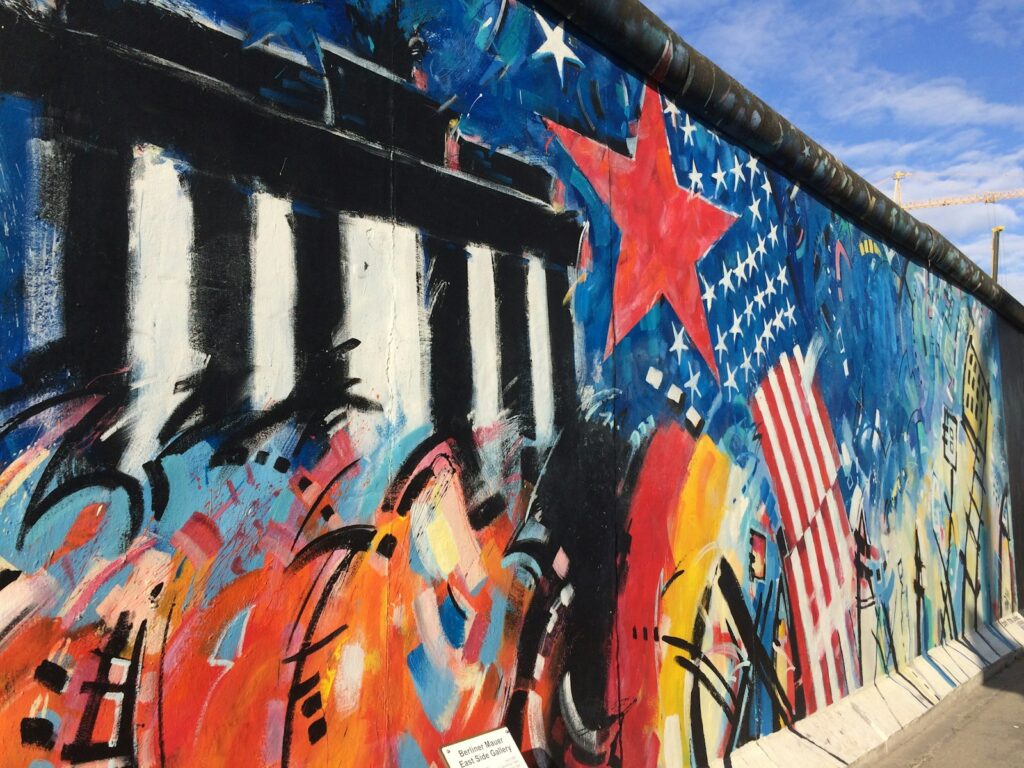In the heart of Europe, where cobblestone streets echo with tales of emperors and artists, there exists a silent witness to one of the most poignant dramas of the 20th century. The Berlin Wall, an emblem of the Cold War’s chilling divides, stood not just as a barrier of concrete and barbed wire but as a symbol of the ideological chasm that split families, friends, and a nation. While many are familiar with its fall, the origins of this formidable structure remain shrouded in layers of historical complexity and political intrigue. Join us as we peel back these layers to uncover a pivotal moment in history—what year was the Berlin Wall built?
Imagine waking up one morning to find your city cleaved in two, with no warning or explanation, families abruptly severed and lives irrevocably altered. This is the reality faced by Berliners in the early 1960s, a reality that began to unfold long before the first slab of concrete was laid. Delving into the intricate tapestry of post-war tensions, espionage, and global reckonings, we will explore how a fragile peace gave way to the stark and imposing edifice that would come to define an era. Whether you’re a history buff or someone looking to understand the lasting impacts of the Cold War, this journey through time promises to illuminate the untold stories behind the Berlin Wall’s construction and its enduring legacy.
The Post-War Landscape of Berlin
After the devastation of World War II, Berlin found itself in ruins. The once vibrant and bustling city was reduced to rubble, with its people grappling with the aftermath of war. The victorious Allied powers divided Germany into four occupation zones, each controlled by either the United States, Great Britain, France, or the Soviet Union. Berlin, located deep within Soviet-controlled East Germany, became a microcosm of the larger geopolitical tensions that would come to define the Cold War.
Escalating Tensions and Division
As ideological differences between the East and West deepened, so did the divide between East and West Berlin. The Western Allies sought to rebuild their sectors in a way that aligned with their democratic values, while the Soviets implemented policies that reflected their communist ideology. This stark contrast led to an increasing exodus of East Germans seeking better opportunities in West Berlin.
The Decision to Construct the Berlin Wall
Faced with a mass exodus of its citizens and fearing an economic collapse, East German authorities decided to take drastic measures. On August 13th, 1961, construction on what would become known as the Berlin Wall began. This decision was met with shock and disbelief by both sides of the divided city.
Construction and Features of the Wall
The construction of the Berlin Wall was a monumental undertaking. It consisted of a series of concrete walls topped with barbed wire fences and guarded by armed soldiers. Along its length were watchtowers equipped with searchlights and machine guns. The wall spanned approximately 155 kilometers (96 miles) through the heart of Berlin.
Life Under Surveillance: Living by the Berlin Wall
For those living in close proximity to the wall, life became a constant reminder of the division. Families were torn apart, with loved ones on opposite sides unable to see or communicate with each other. The wall became a symbol of oppression and surveillance, as East German authorities closely monitored the activities of their citizens.
Escape Attempts and Tragic Consequences
Despite the formidable barriers, many individuals attempted daring escapes across the Berlin Wall. Some tried to climb over it, while others dug tunnels or used makeshift devices to breach its defenses. Tragically, not all escape attempts were successful, and many lives were lost in pursuit of freedom.
International Reactions and Diplomatic Standoffs
The construction of the Berlin Wall sent shockwaves throughout the international community. Western leaders condemned the actions of East Germany, viewing it as a violation of human rights and an affront to freedom. Tensions between East and West reached new heights, with diplomatic standoffs exacerbating an already volatile situation.
The Fall of the Berlin Wall: Symbol of Unity
After nearly three decades of division, the Berlin Wall finally fell on November 9th, 1989. The world watched in awe as jubilant crowds gathered at the wall’s checkpoints, tearing down its concrete barriers piece by piece. This momentous event marked not only the reunification of a divided city but also symbolized hope for a world no longer bound by ideological differences.
Legacy of the Berlin Wall: Reunification and Commemoration
The fall of the Berlin Wall paved the way for German reunification and signaled an end to an era defined by Cold War tensions. Today, remnants of the wall serve as poignant reminders of a tumultuous past. Museums and memorials stand as testaments to those who suffered under its shadow and commemorate those who lost their lives attempting to cross its barriers.
Concluding Remarks: Reflecting on a Monumental Chapter in History
The construction and subsequent fall of the Berlin Wall represent a pivotal chapter in history. It serves as a stark reminder of the human cost of ideological divisions and the resilience of those who fought for freedom. Understanding the year the Berlin Wall was built allows us to delve deeper into the complexities of this monumental structure and its lasting impact on global politics.



